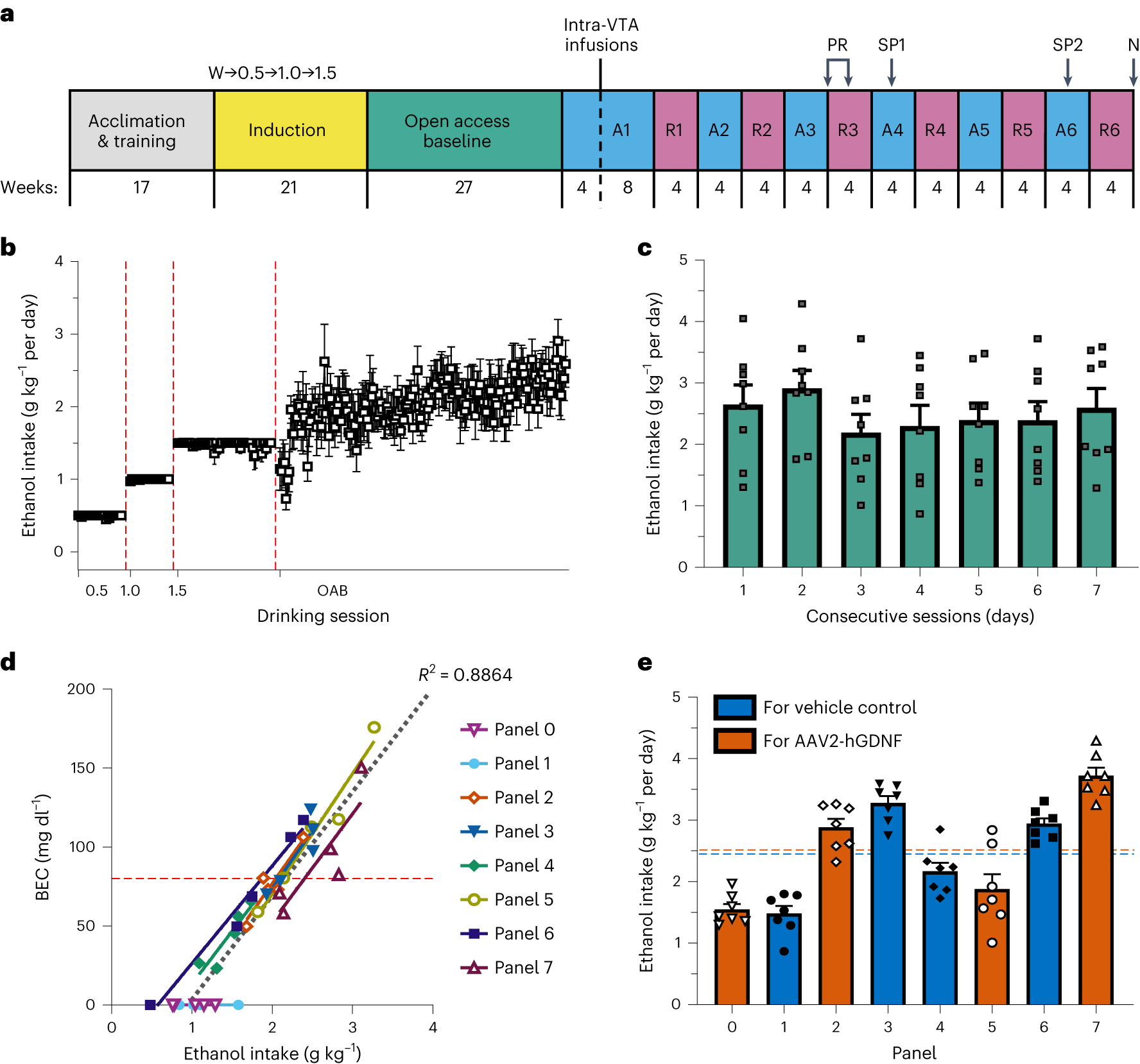Researchers from Ohio State University, Oregon Health and Science University, Wake Forest School of Medicine, and the University of California, San Francisco, have published a research paper in the prestigious medical journal Nature Medicine titled “GDNF gene therapy for alcohol use disorder in male non-human primates.”
This study in non-human primates, specifically rhesus macaques, demonstrates that the delivery of human Glial-Derived Neurotrophic Factor (hGDNF) to the Ventral Tegmental Area (VTA) of the midbrain using adeno-associated virus serotype 2 (AAV2) can reduce alcohol consumption and prevent relapse of alcohol cravings after abstinence.

Professor Krystof Bankiewicz, the corresponding author of the paper, stated that this gene therapy targets changes in dopamine function within the midbrain’s edge reward pathway caused by chronic alcohol consumption. Experimental results show that this gene therapy can prevent the relapse of alcohol cravings after abstinence, potentially offering a one-time, sustained treatment for severe alcohol addiction, also known as Alcohol Use Disorder (AUD).
Excessive alcohol consumption alters the release of dopamine, a neurotransmitter, in the Ventral Tegmental Area (VTA) of the edge reward pathway in the midbrain. As AUD progresses, these changes become more pronounced and include reduced dopamine release, decreased dopamine receptor sensitivity, and increased dopamine uptake. These changes result in dopamine levels in the pathway being lower than normal. This “hypodopaminergic” state compels individuals to resume drinking after a period of abstinence. Currently, there are no treatments or medications targeting this pathway.
In this study, the research team conducted experiments on rhesus macaques, which were accustomed to consuming 4% alcohol before treatment. In the treatment group, AAV2-hGDNF was injected into the VTA of eight macaques, leading to the expression of Glial-Derived Neurotrophic Factor. Another four macaques received sterile saline injections using the same procedure as a control group.
Before treatment, these macaques were accustomed to drinking 4% alcohol. After treatment, the treatment group of macaques exhibited sustained expression of human Glial-Derived Neurotrophic Factor (hGDNF) in their brains. Over the subsequent 12 months, they showed no relapse in drinking behavior during repeated periods of abstinence and alcohol reintroduction challenges. This behavioral change was accompanied by neurophysiological regulation of ventral tegmental area (VTA) dopamine signaling, which counteracted the hypodopaminergic signaling state associated with chronic alcohol use. This suggests that GDNF gene therapy targeting the VTA can reduce alcohol consumption and prevent relapse of alcohol cravings, potentially offering a promising treatment strategy for Alcohol Use Disorder (AUD).
Reference
1. Ford, Matthew M., et al. “GDNF gene therapy for alcohol use disorder in male non-human primates.” Nature medicine 29.8 (2023): 2030-2040.
